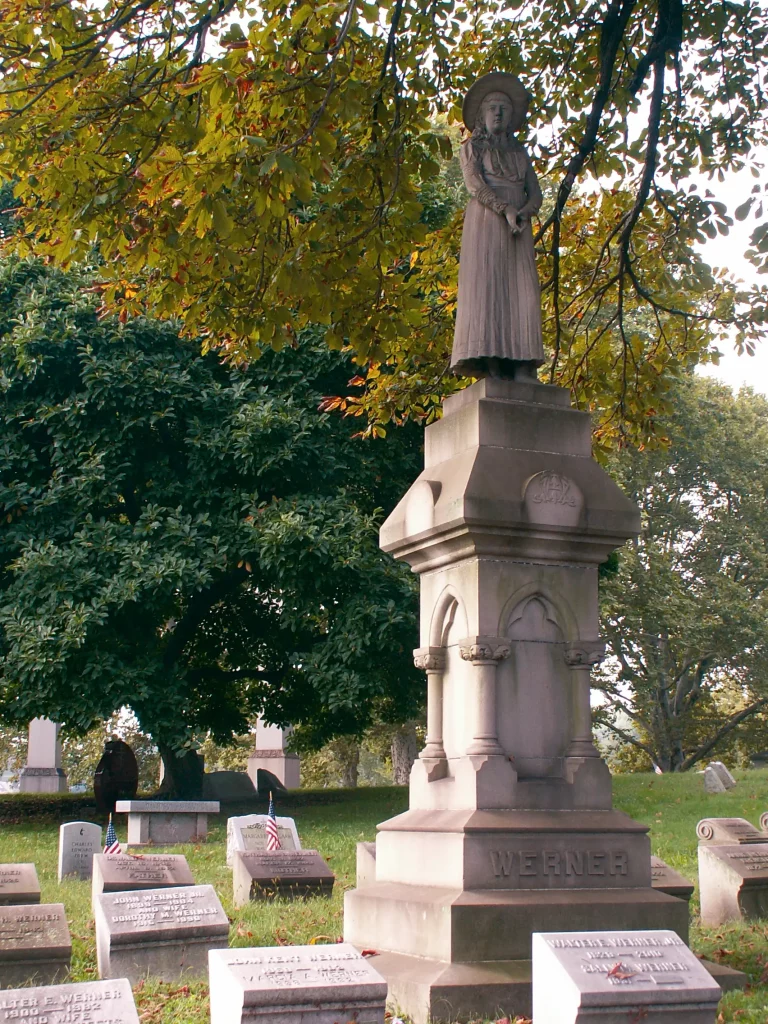
Many Werners are buried in this plot, but the statue of what could easily be a fourteen-year-old girl is probably a portrait of Stella D. Werner, who died at not quite fifteen years old in 1890. That is about the right date for this style of monument.






















